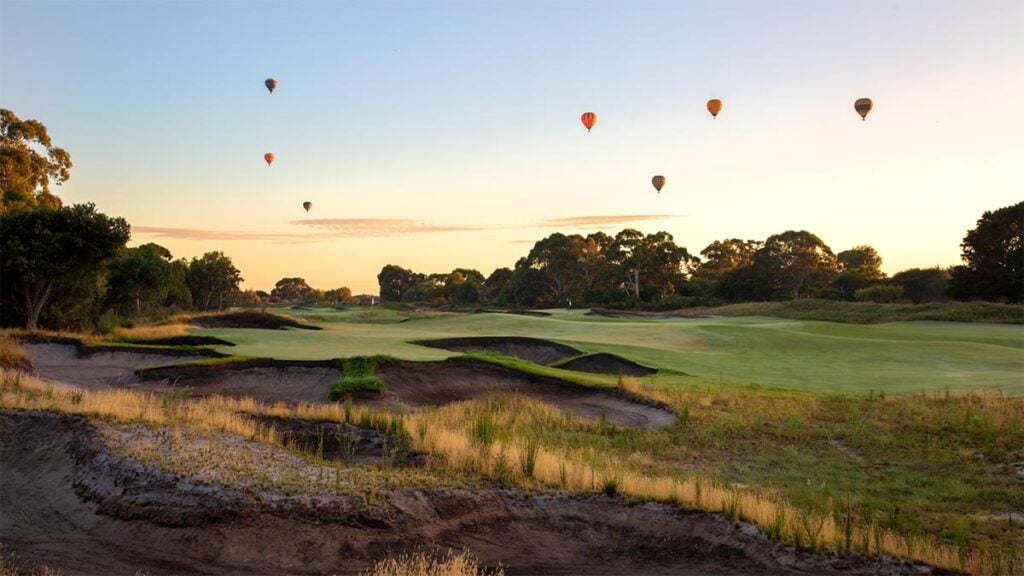The story of Travis Smyth, our best performer on the Asian Tour the past four seasons, illustrates the options for Australians on ‘stepping-stone tours’
When Travis Smyth walks onto the first tee at Jack Nicklaus Golf Club Korea for the Shinhan Donghae Open on September 11, he’ll be fuelled by happy memories yet motivated not to return.
That might seem odd for someone who finished second at the same tournament last September. However, the 30-year-old from the South Coast of New South Wales yearns to spread his wings. Asia has been good to him, but it’s time for a change… if he can successfully deploy an exit strategy.
“I’ve been on the Asian Tour now for six, seven years, and it’s slowly becoming a pretty good tour in terms of [being] a stepping-stone tour,” Smyth says. “It’s a good place to hone your craft if you’re trying to just make some money, play professional golf and then try to make it on a bigger tour.”
A year ago, Smyth closed 65-64 at the Ocean Course at Club72 to reach 21-under-par for the Shinhan Donghae event, just a stroke behind the winner, Japan’s Kensei Hirata. It’s a different venue this year, but Smyth is still feeling good vibes ahead of what will be his 100th career start on the Asian Tour.
“It’s pretty enjoyable, to be honest,” he says of the circuit. “We’ve gone all over the world. We’ve had events in the UK, which have been awesome. We just got back from Morocco and obviously South-East Asia feels comfortable.”
In the past three years, Smyth has finished seventh, fourth and eighth on the Asian Tour Order of Merit. This year he sits 15th entering the circuit’s closing run of 13 tournaments, beginning with the Indonesian Open in late August.
Smyth might be comfortable playing in Asia, but he can still see the PGA Tour or DP World Tour on the horizon. Getting there is difficult in the current climate of professional golf, and Asian Tour players have been stripped of any exemption categories at other qualifying schools.
LIV Golf presents an attractive third option, especially considering the pathway between the Asian Tour’s International Series and the Saudi-backed league. Often forgotten is that Smyth has been there before – he contested the first three LIV Golf events in 2022, gaining access by running second at the International Series England, which doubled as a qualifier for LIV’s first tournaments. Smyth finished between 22nd and 33rd in his trio of LIV starts, banking $US850,000.
“The carrot of getting a spot on LIV is pretty good,” he says. “Over the past few years, the winners have seemed to be getting called up to be reserves on LIV. That’s what it feels like you’re playing for each week. You might not get onto LIV, but if you win one [of the International Series events], pretty soon after they ask you to come and join as a reserve.
“Those events are great,” Smyth says of the International Series. “Obviously, we get really strong competition with the LIV guys coming and playing. The courses are great. I feel like there’s more money thrown into those events – you can really tell the difference between them and other Asian Tour events.”
Smyth is still planning to keep his options open. He intends to enter qualifying school in America at the end of this year to try to gain status on the PGA Tour or secondary Korn Ferry Tour.
“I’m trying to do both,” he says. “I’ll have to miss a couple of [Asian Tour] events to do Q-school, but they’re both amazing [options]. I feel like you can do both because I’m playing nine or 10 International Series events regardless, and I’m going to try to do the best I can to get onto LIV.
“I’d probably prefer to be on LIV than go down the PGA Tour route. I’ve played it before, and it was super-fun and exciting and that’s probably Plan A. Plan B being to give myself another option and try to get some status over in the US.”
The situation means Smyth is unlikely to be seen on his home circuit much this summer. “It’s really hard,” he laments. “When I first turned pro, the tours were more aligned because the Asian Tour was co-sanctioning with the DP World Tour, and with the DP World Tour being in conjunction with the Aussie tour, with the schedule, you could play both tours and play 25, 26 tournaments a year. It was amazing. Now the Asian Tour’s schedule and Aussie tour’s schedule clash all the time.
“It sucks. It’s like, I’m Australian, I want to have a bigger presence in Australia. I want to play well here, but I just can’t.”




